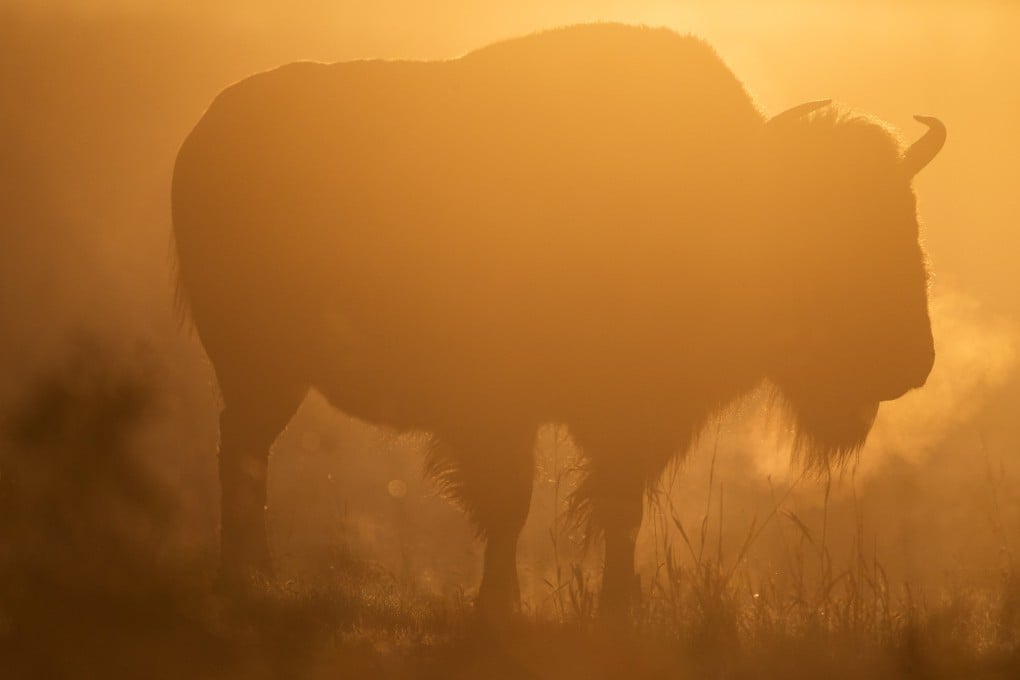Canada’s bison conservation success story is also partly about a rejuvenation of First Nation culture
- Indiscriminate slaughter saw the bison nearly disappear, but conservation efforts launched in Canada more than a century ago have seen them return to the wild
- From a national park in Alberta they have spread to six provinces, improving ecosystems, aiding a revival of First Nations culture and spurring tourism

It’s dawn at Elk Island National Park and Canada’s largest land animals are on the move. Guttural grunts punctuate the stillness as a herd of plains bison emerge from the mist, the animals’ shaggy silhouettes backlit by the early morning sun. Cows and bandy-legged calves stay close to each other as they graze while a massive, hump-backed bull brings up the rear, warily surveying the landscape.
Surrounded by these mighty herbivores, it’s not hard to imagine thousands upon thousands of them moving across the Canadian plains in a never-ending cycle of life and death.
Around 250 years ago, such a vision was reality. Back then, 30 million to 60 million bison roamed across North America, all the way from Mexico to northern Canada. Huge herds migrated and grazed across open grasslands, playing a critical role in shaping ecosystems and sustaining numerous indigenous tribes.
Yet by 1888, indiscriminate slaughter meant the bison had disappeared completely from the Canadian wild. It was as if they had never existed.
“All that was left of the once awe-inspiring herds that had shaped the ecology and cultures of the Great Plains for millennia were a few scattered survivors behind fences in Manitoba, Montana and Texas,” says Daniel Kraus, director of national conservation at the Wildlife Conservation Society (WCS) Canada.
